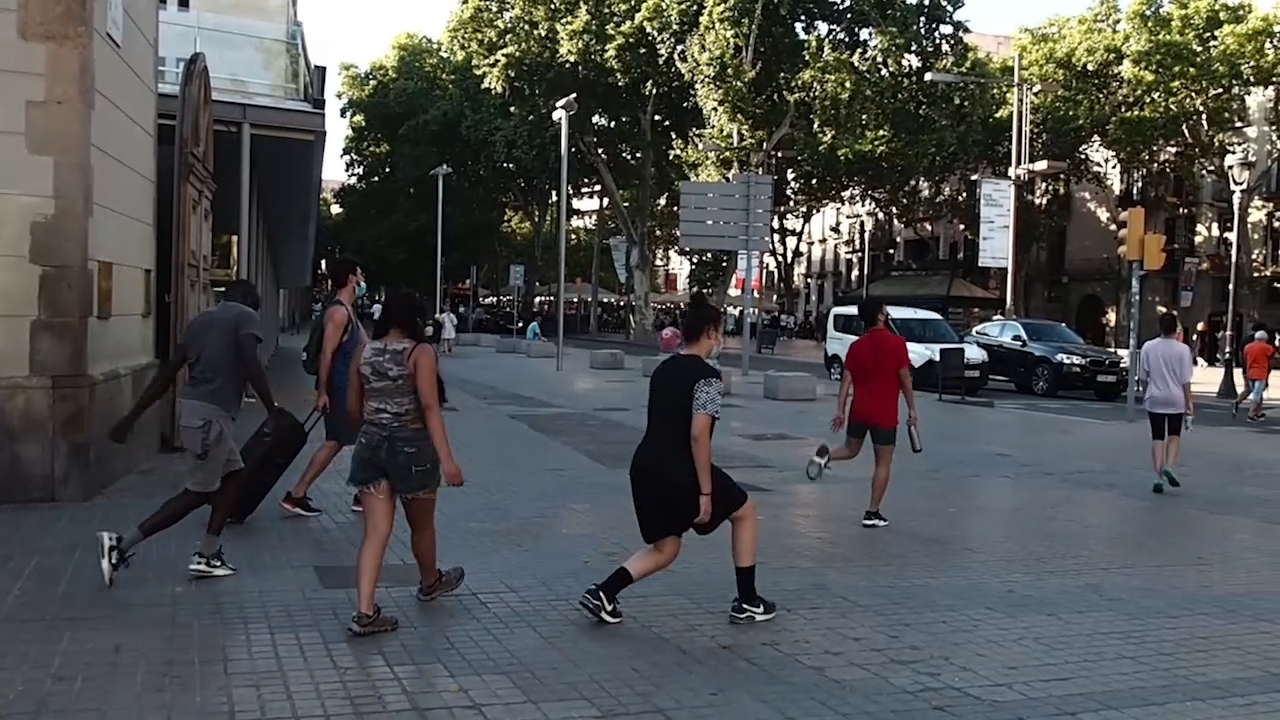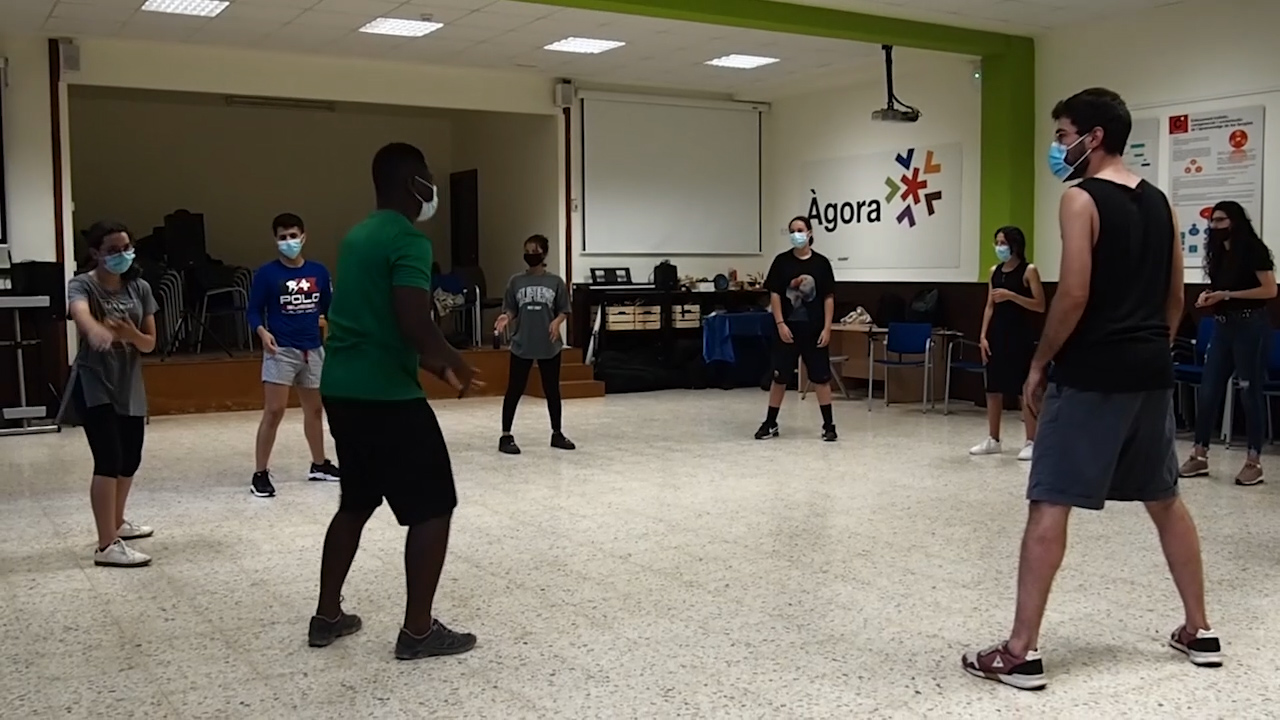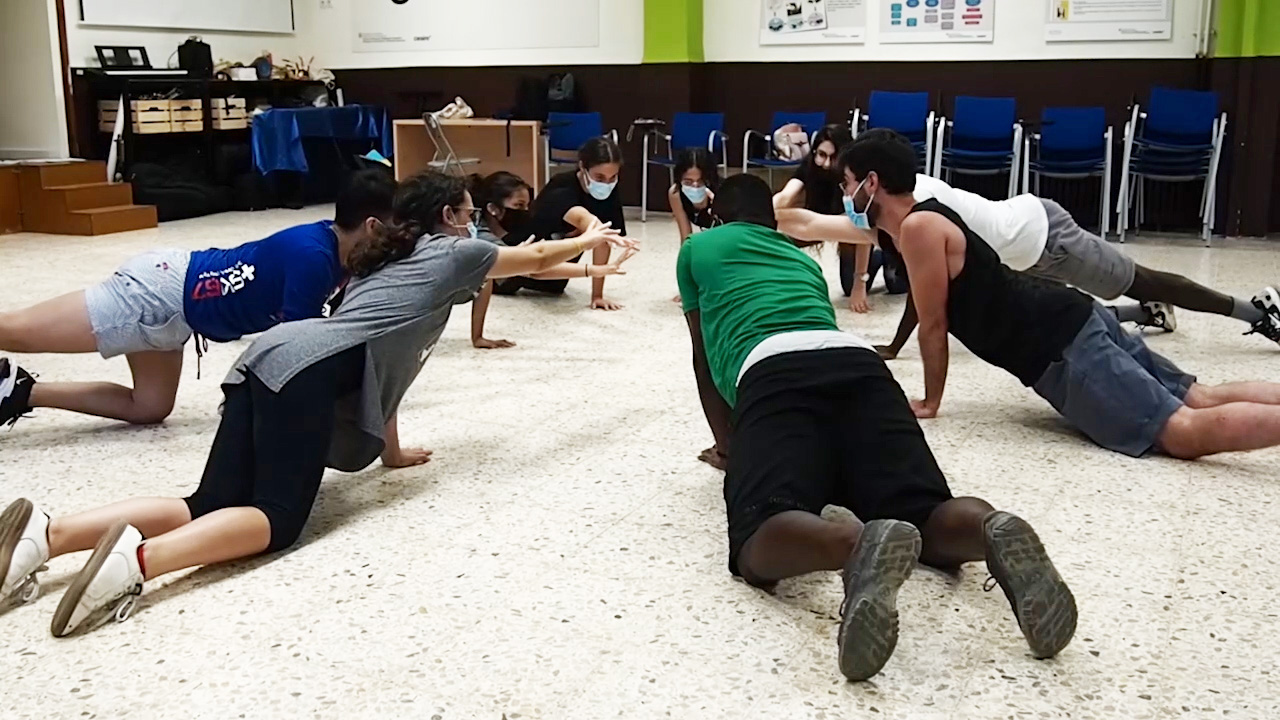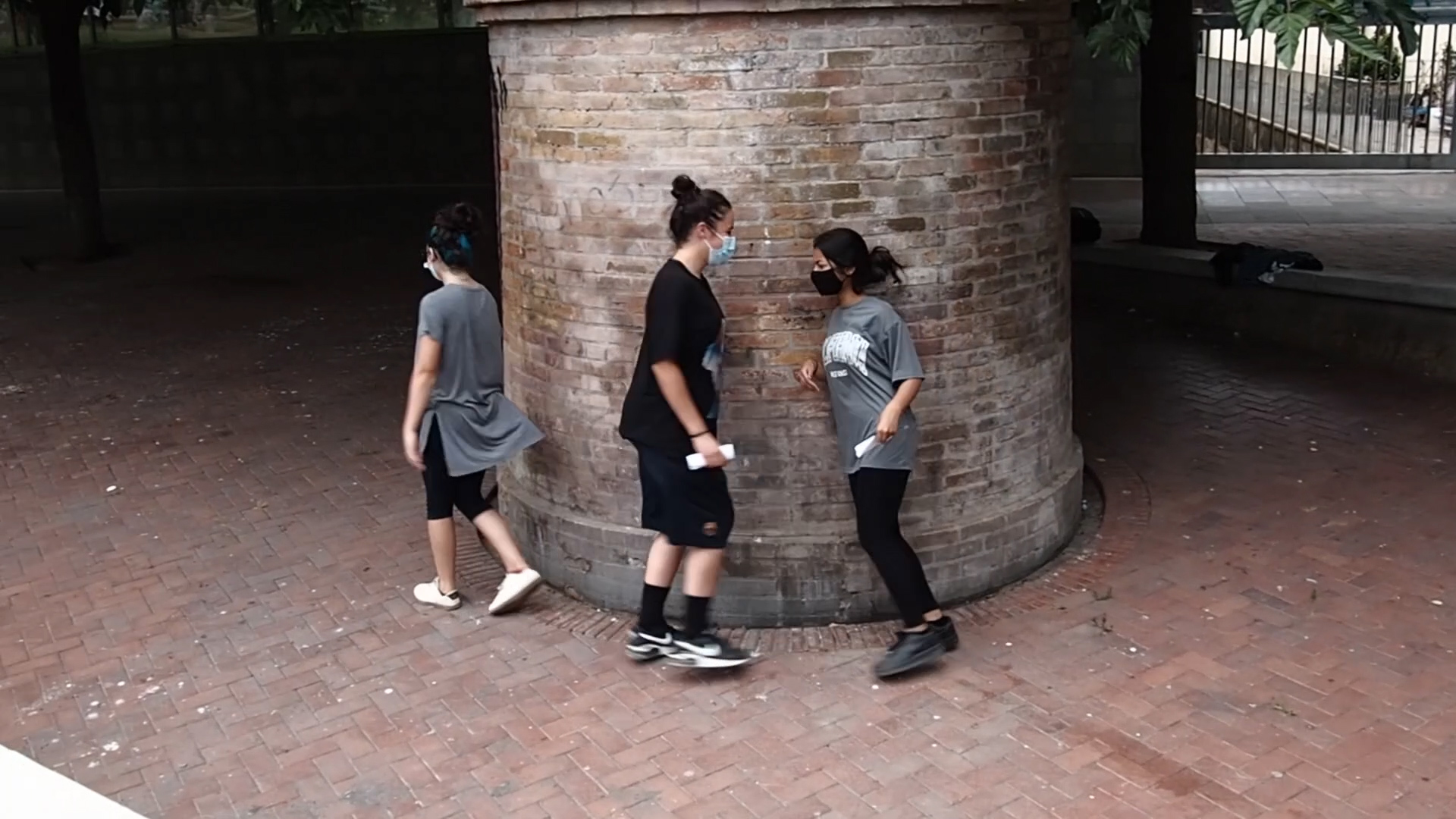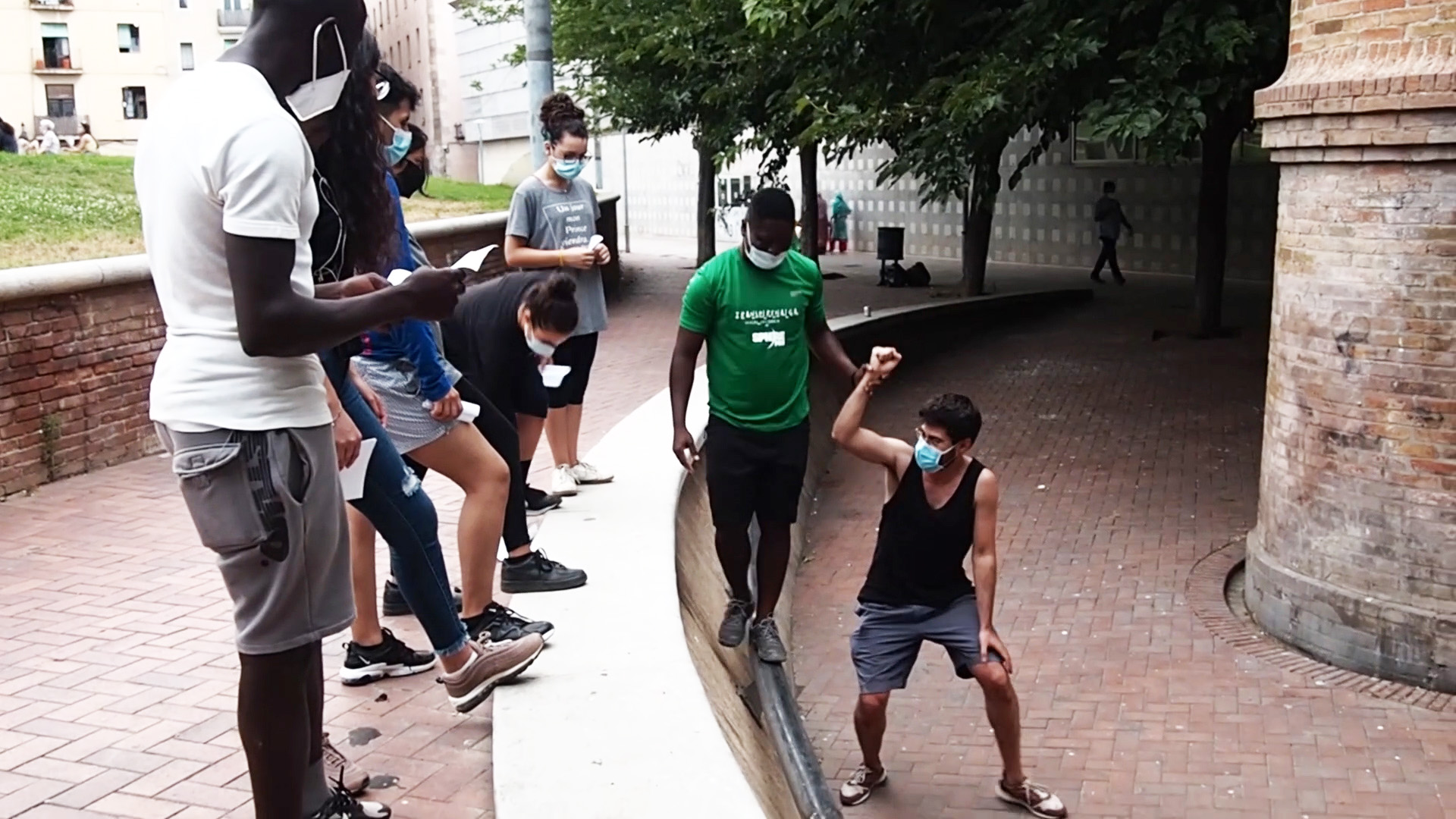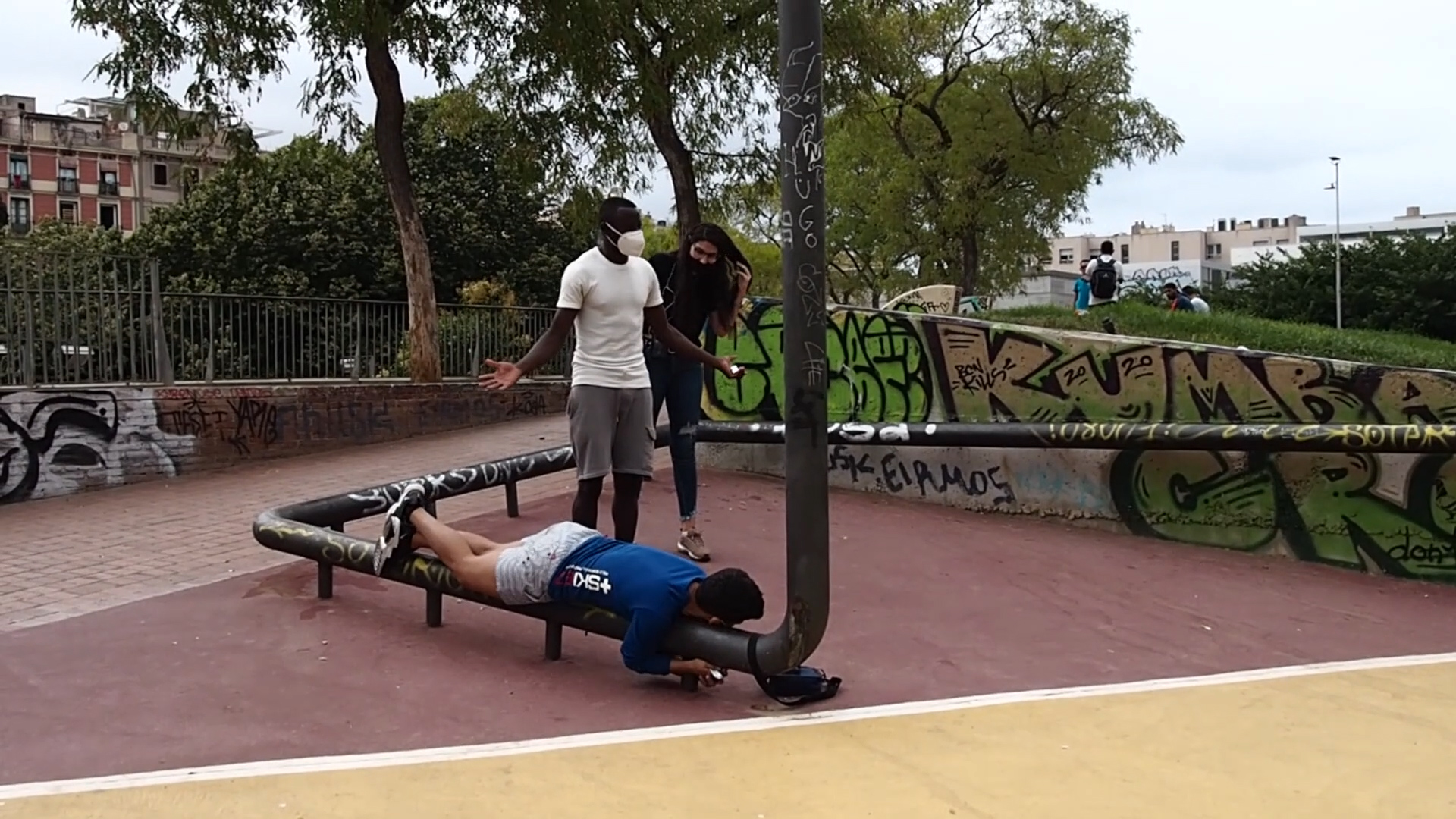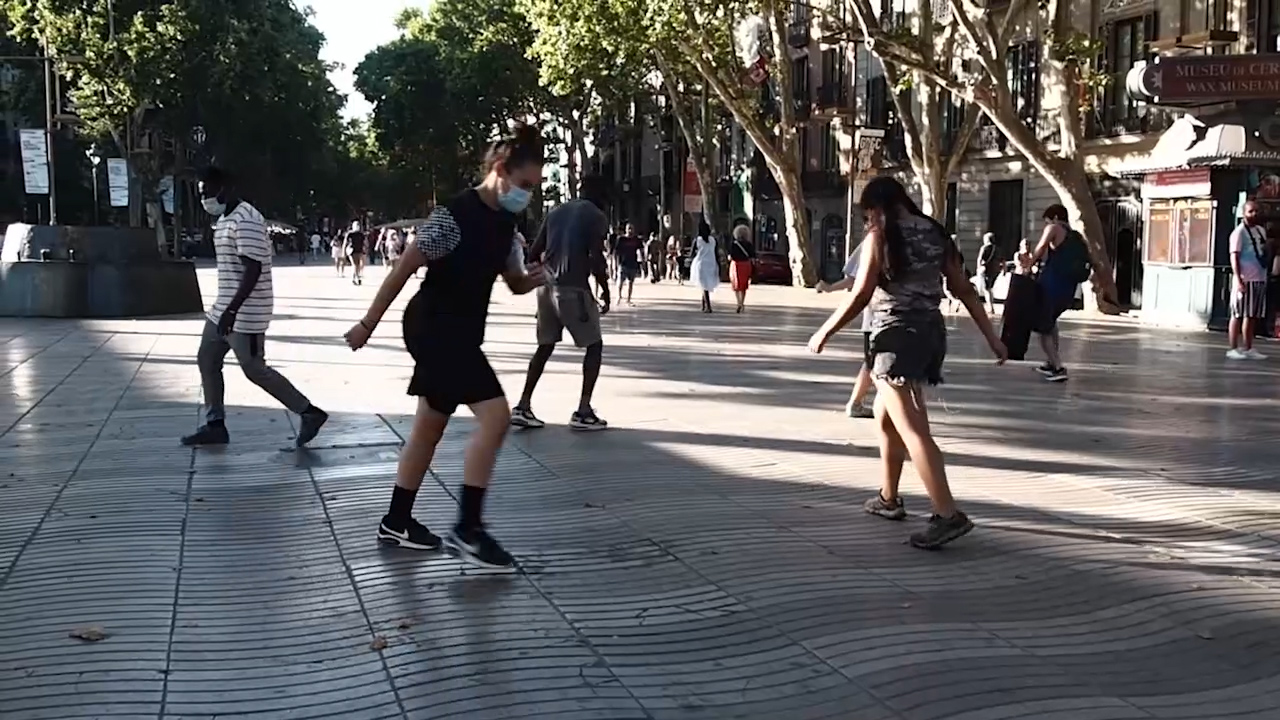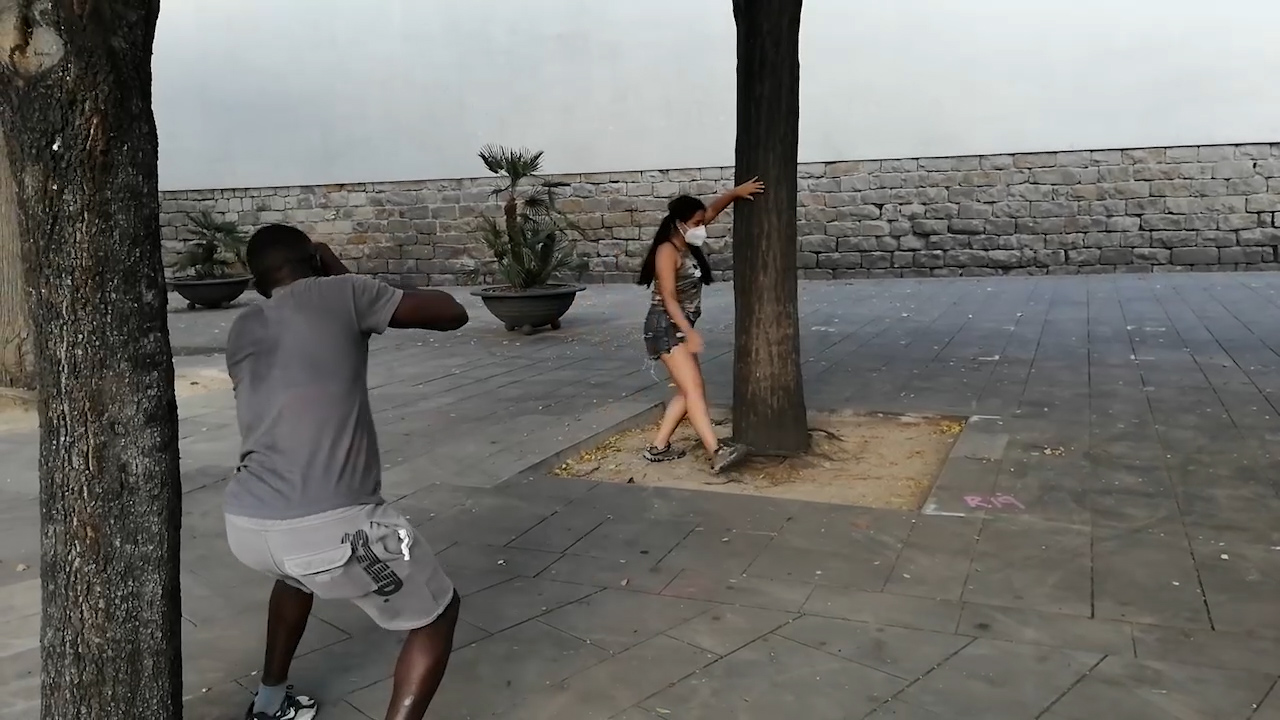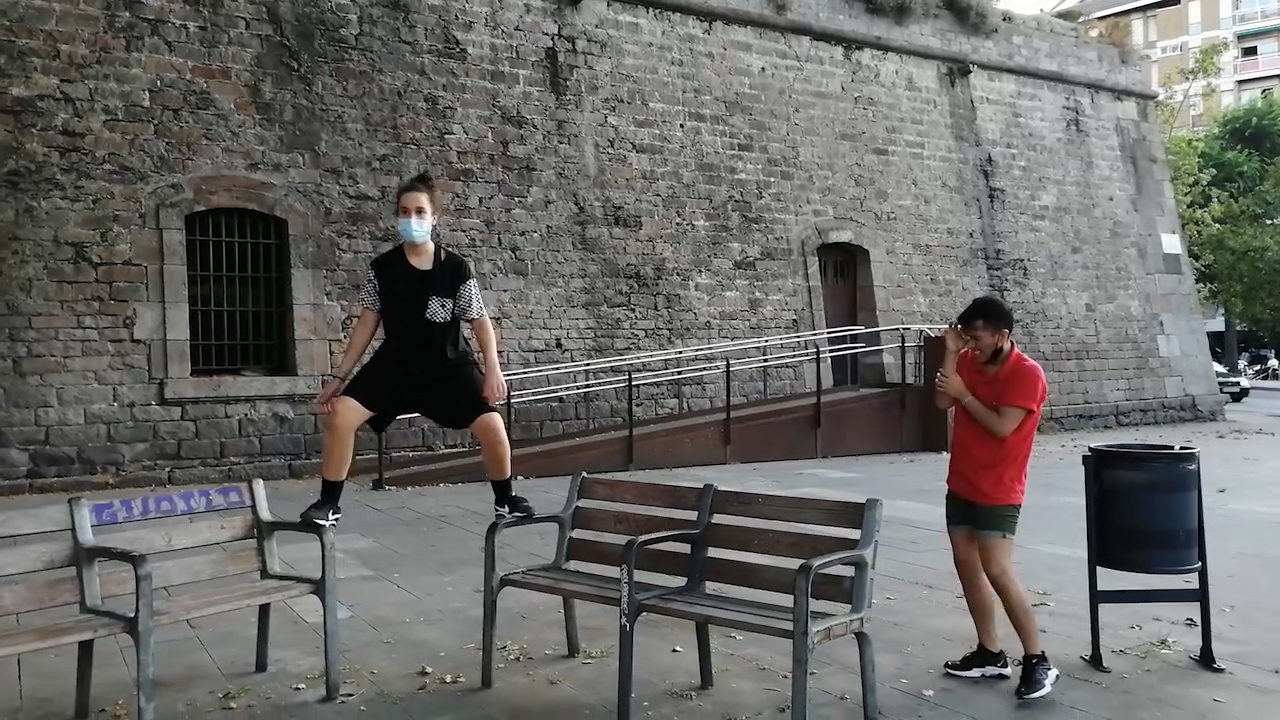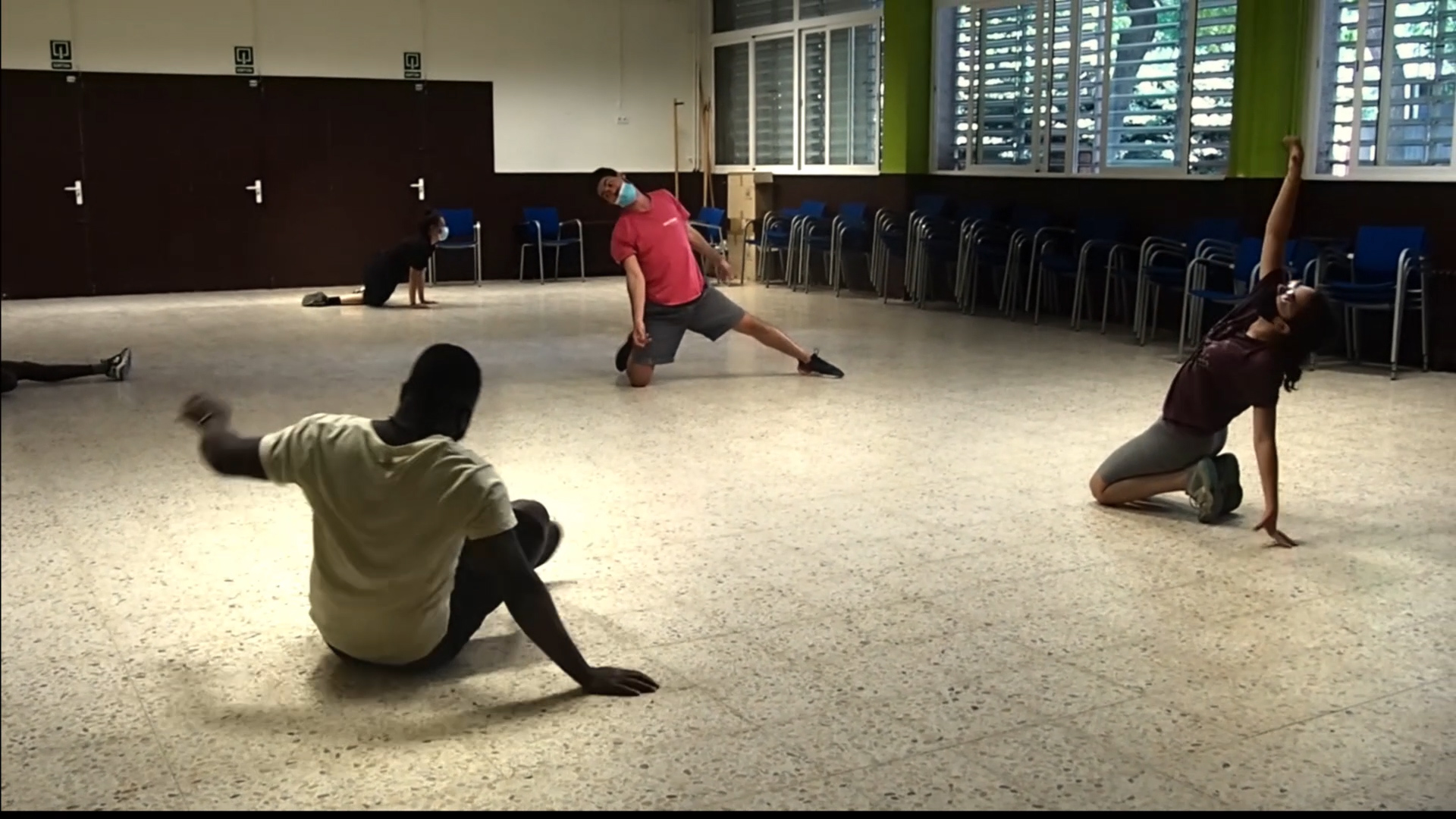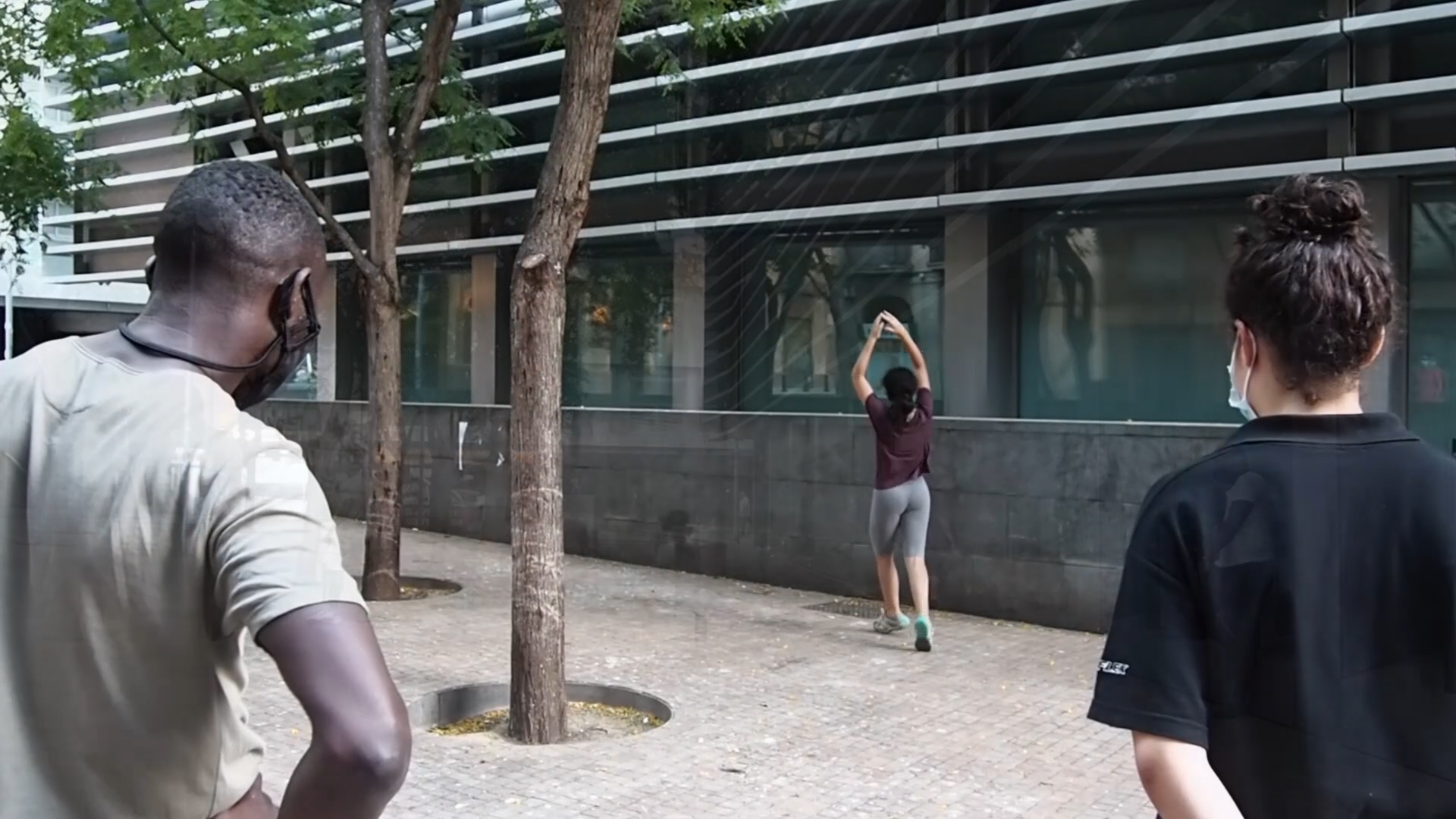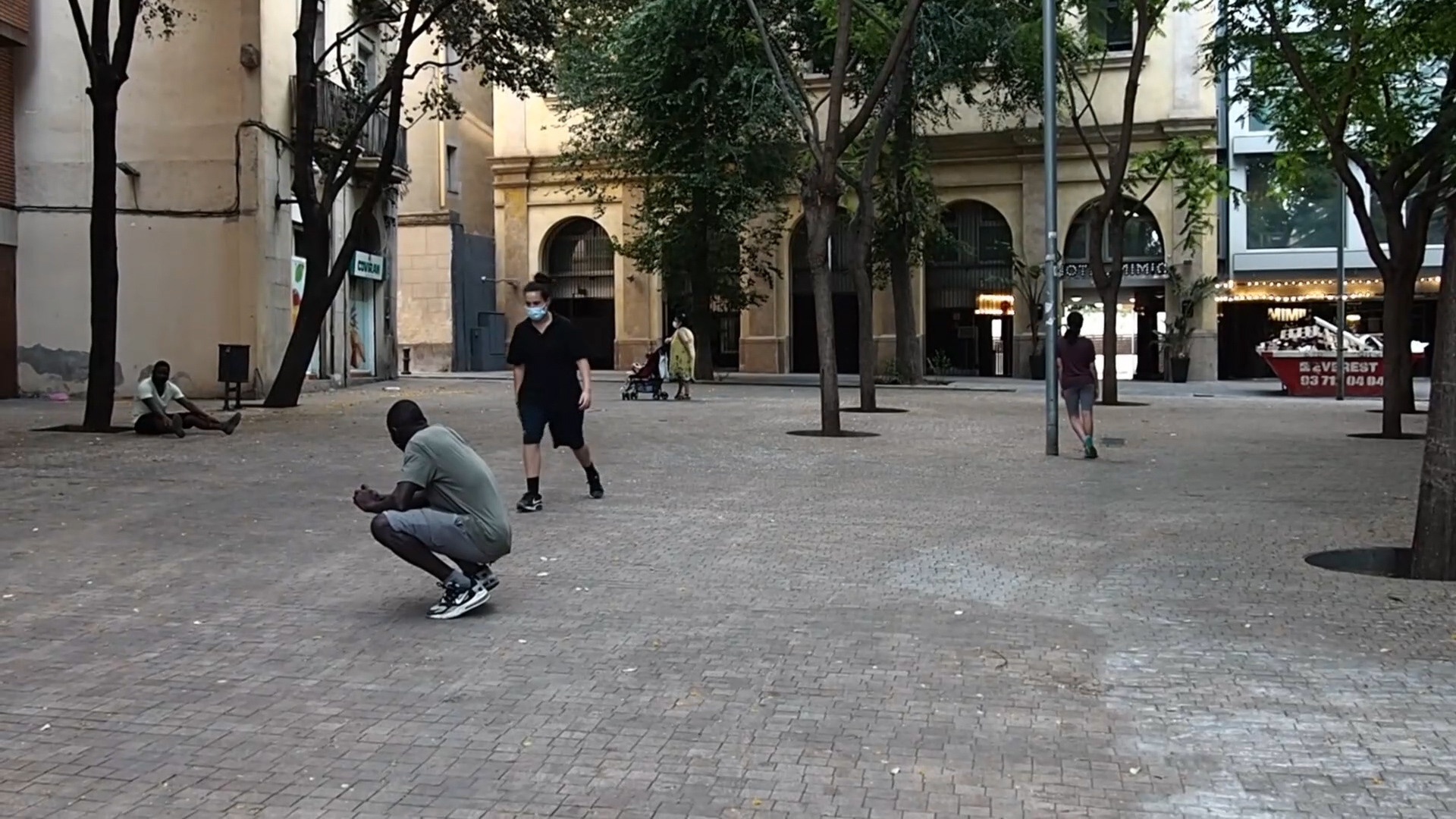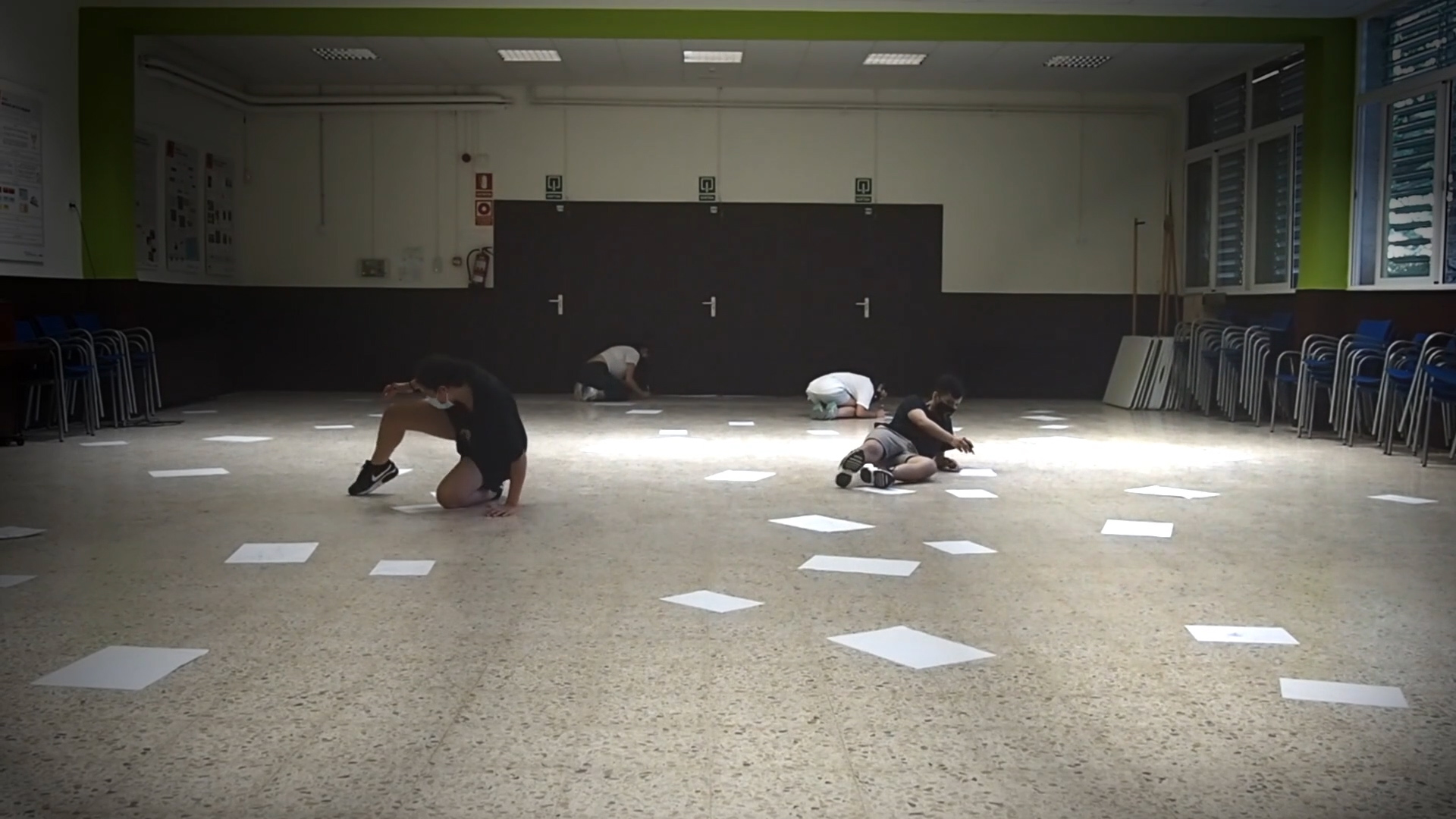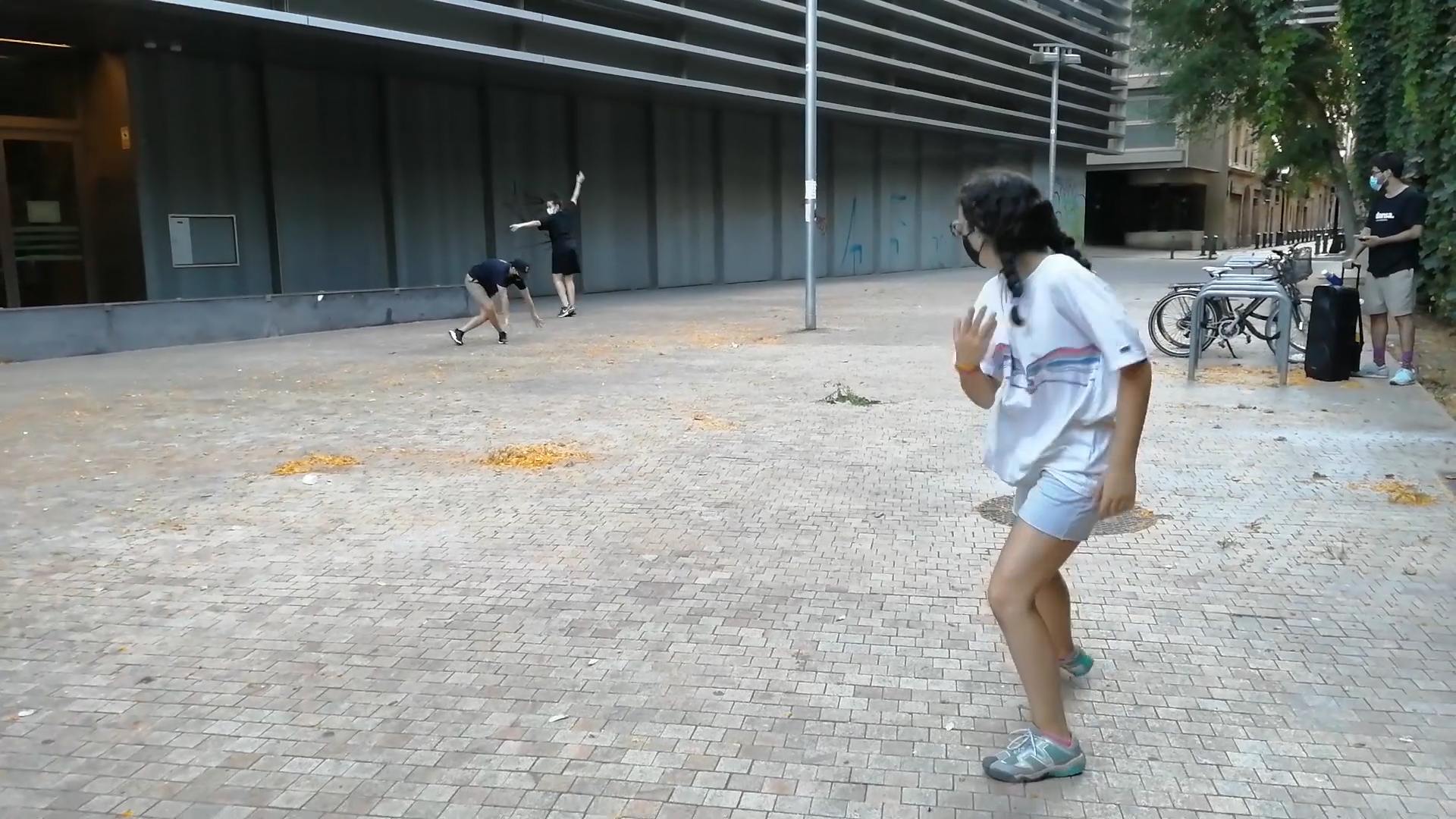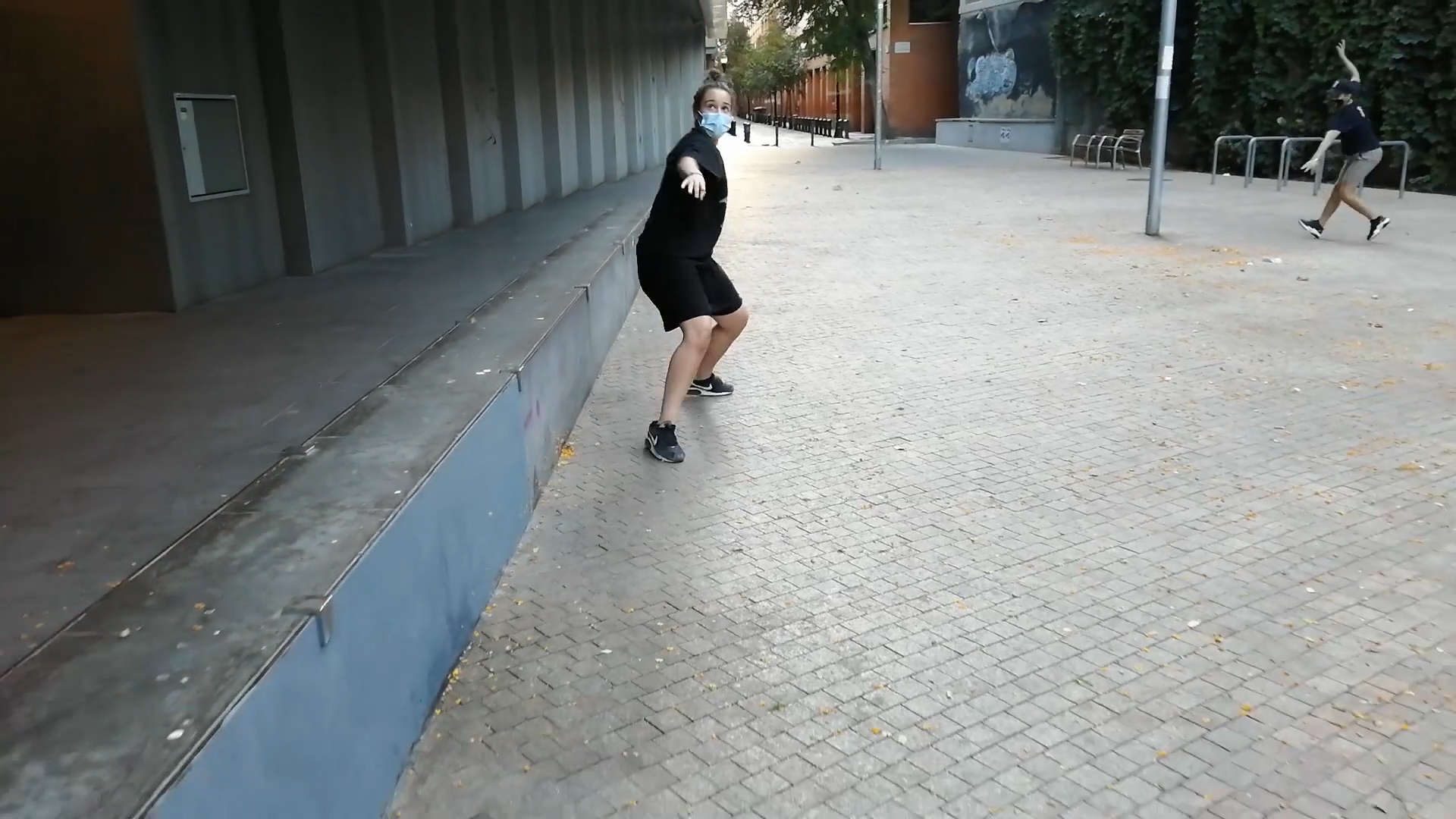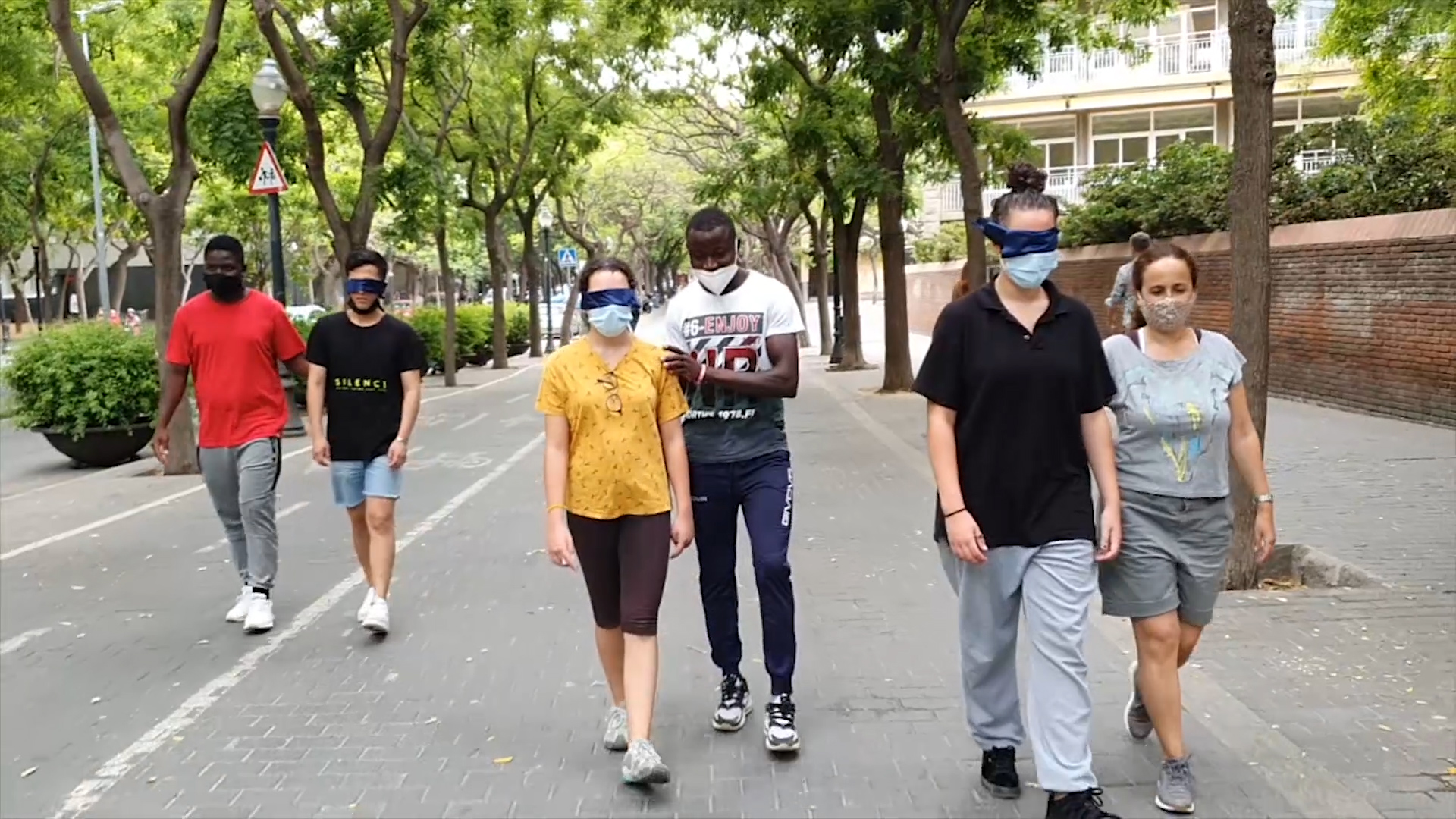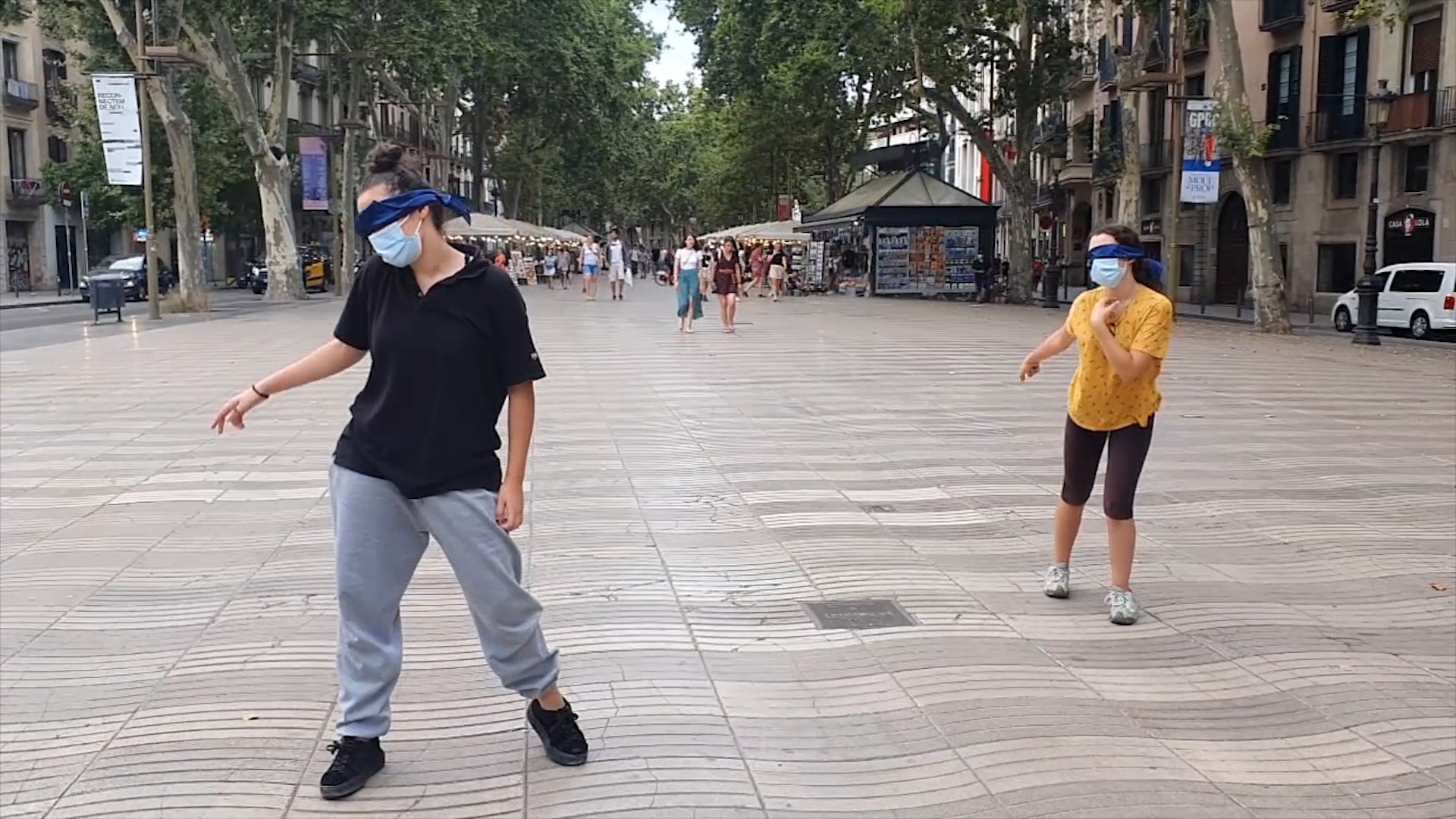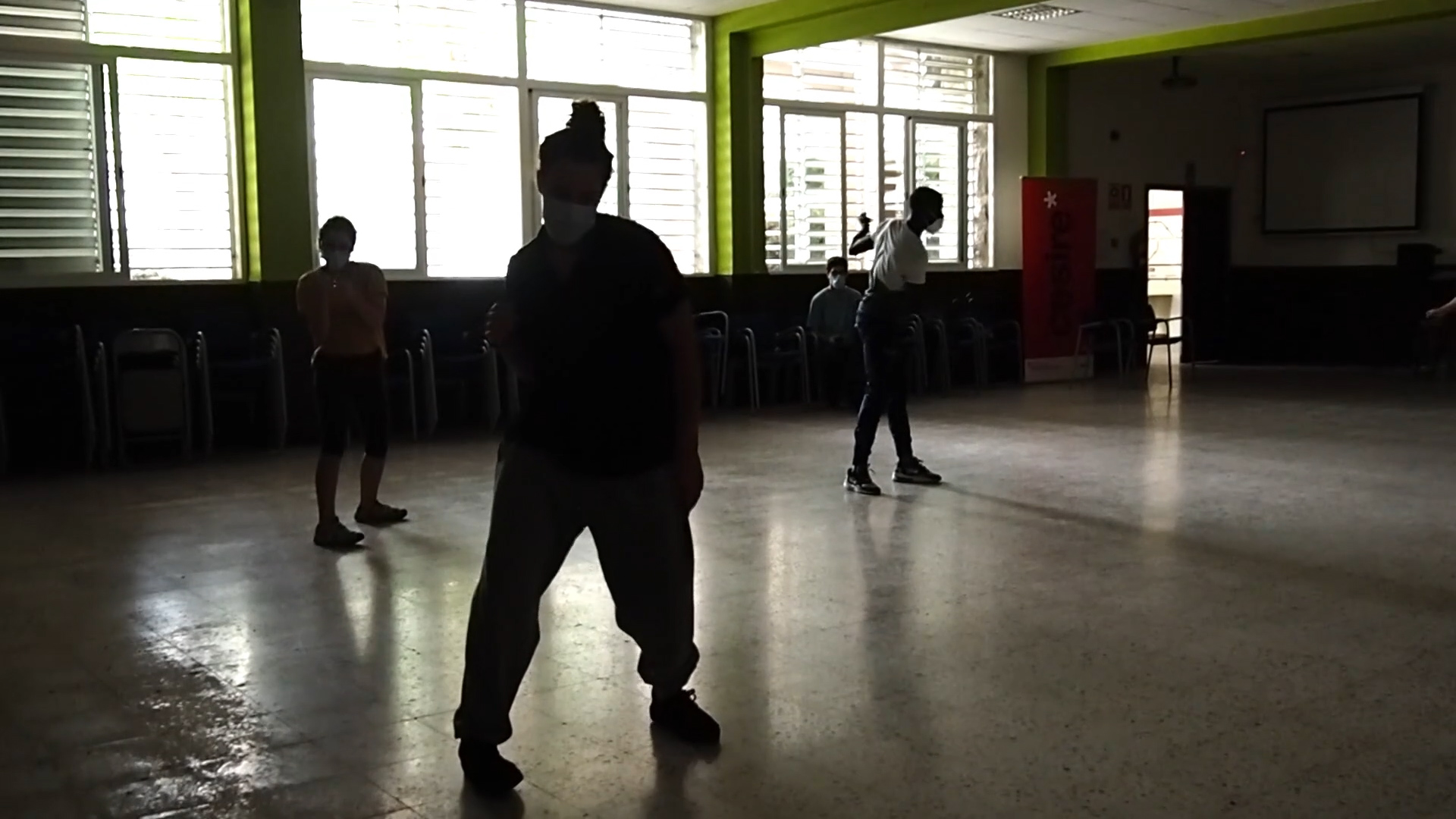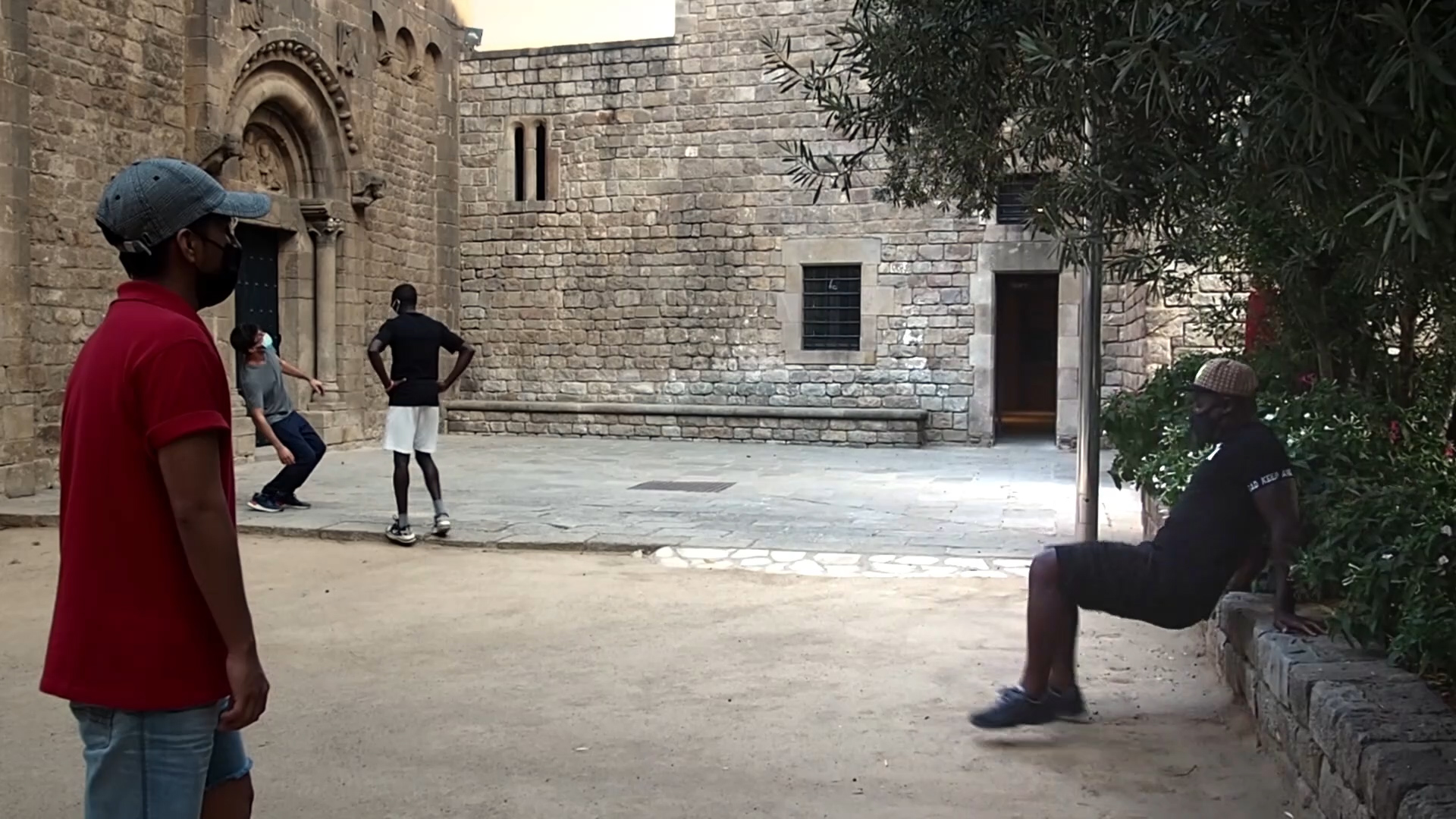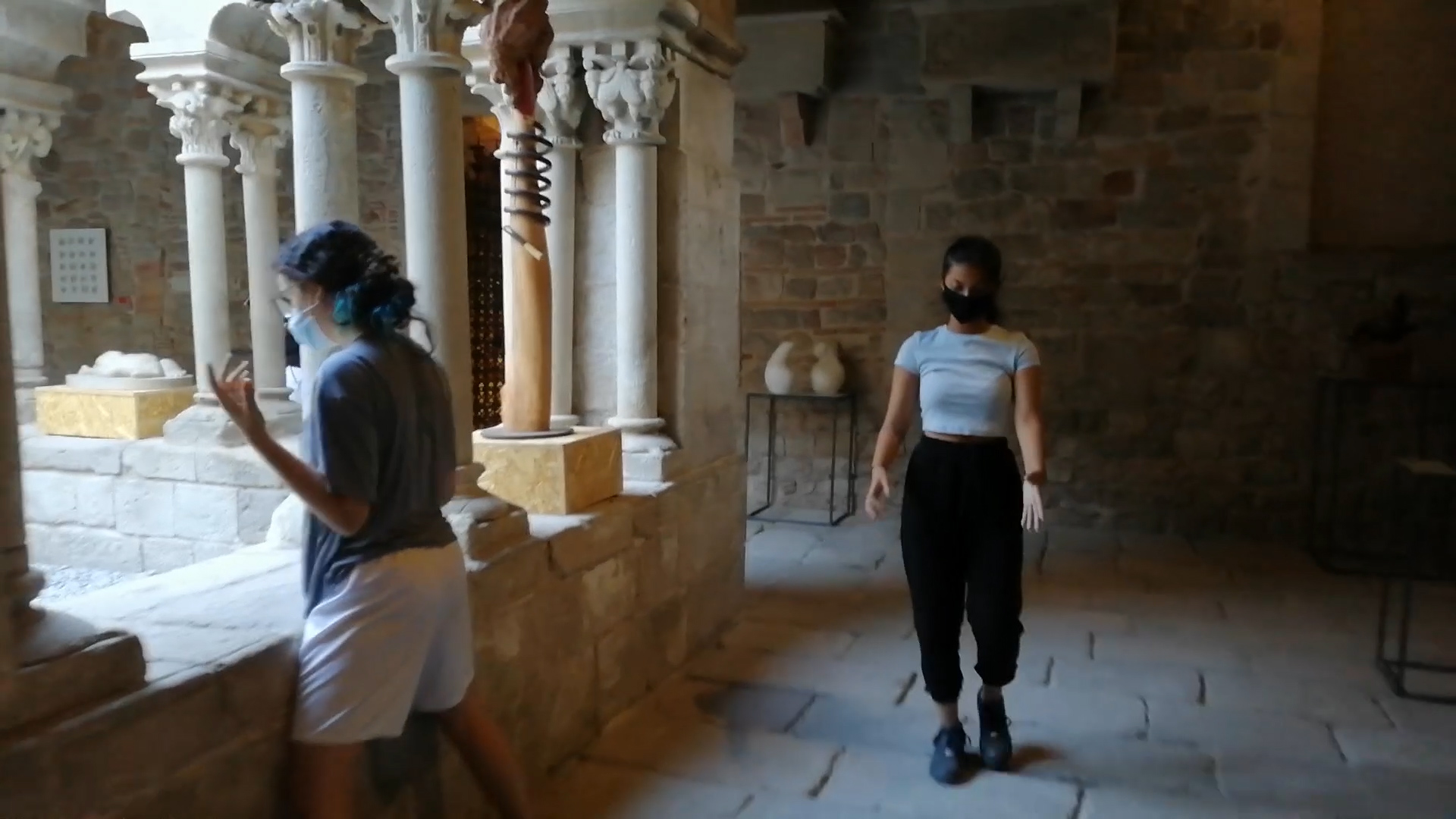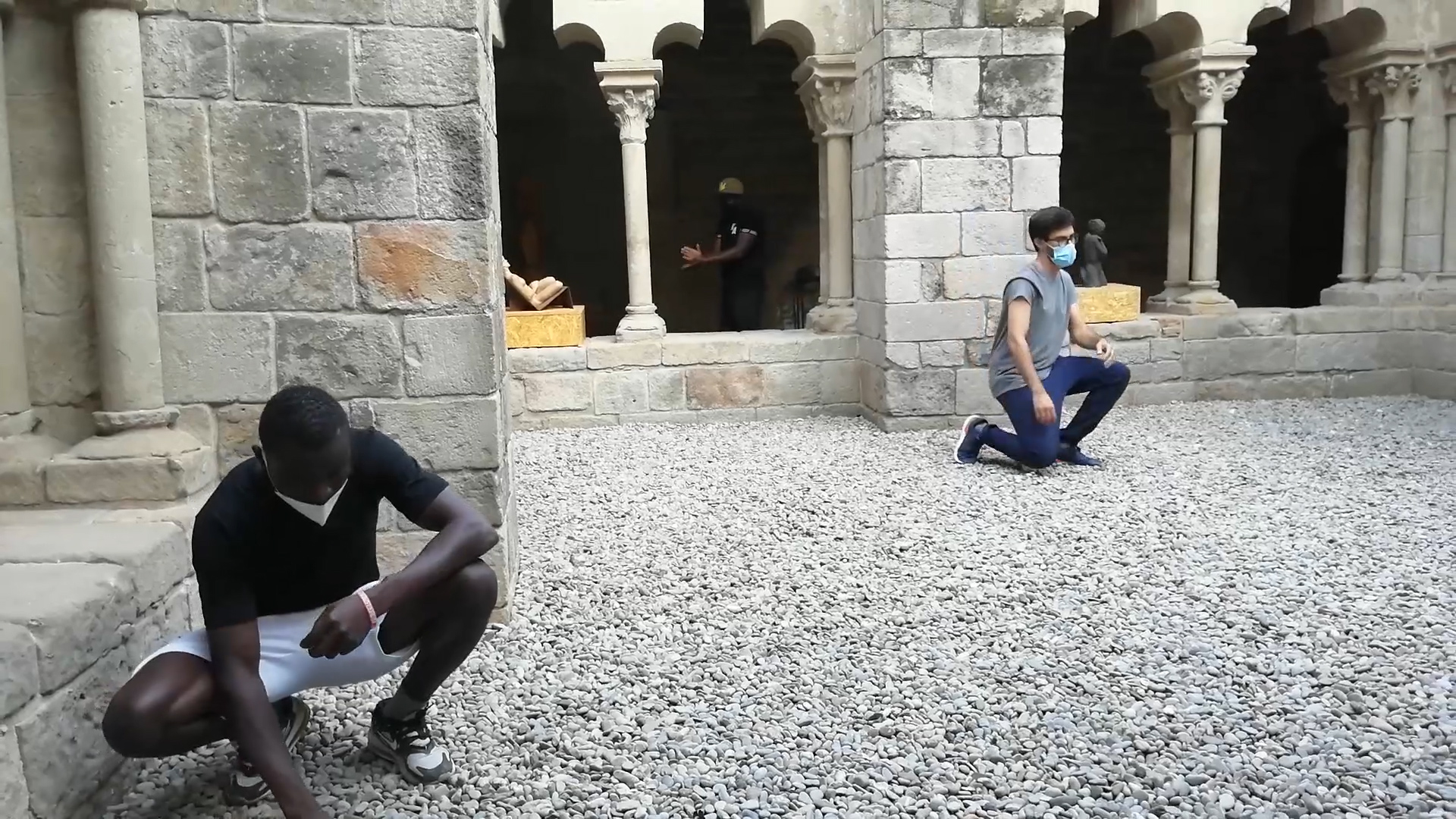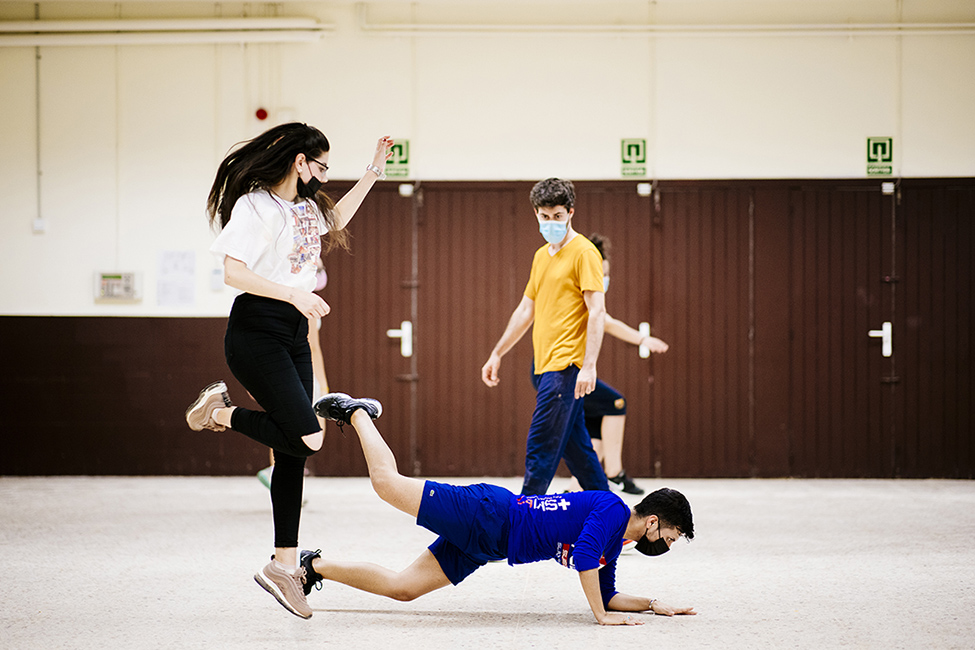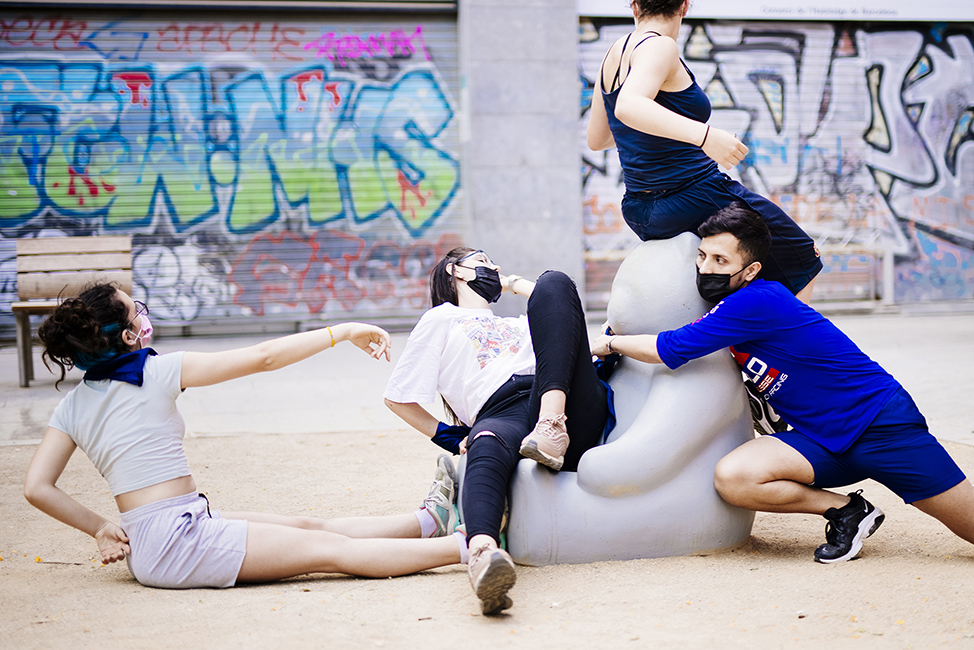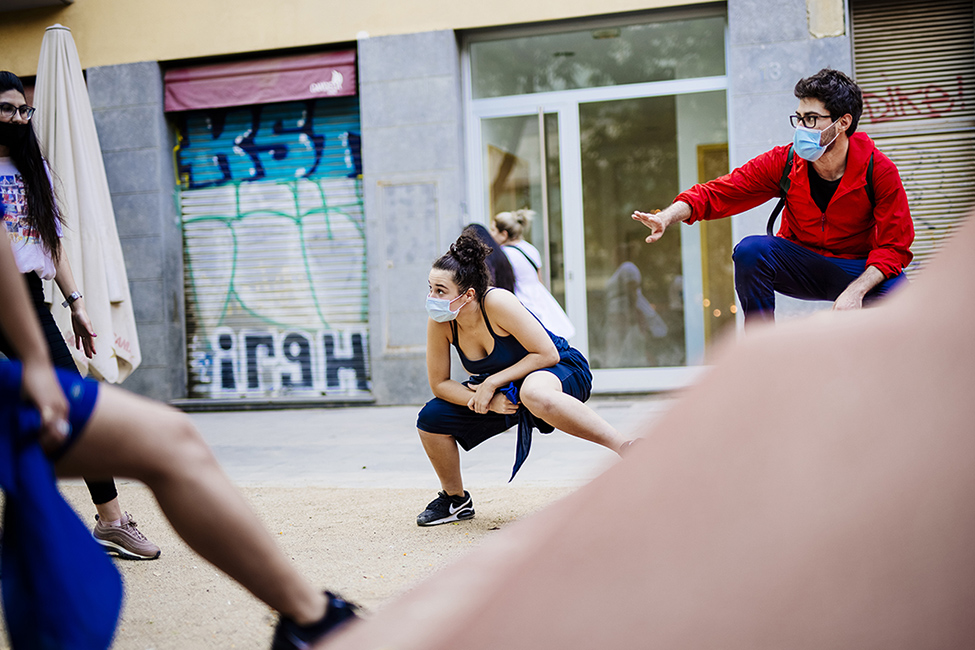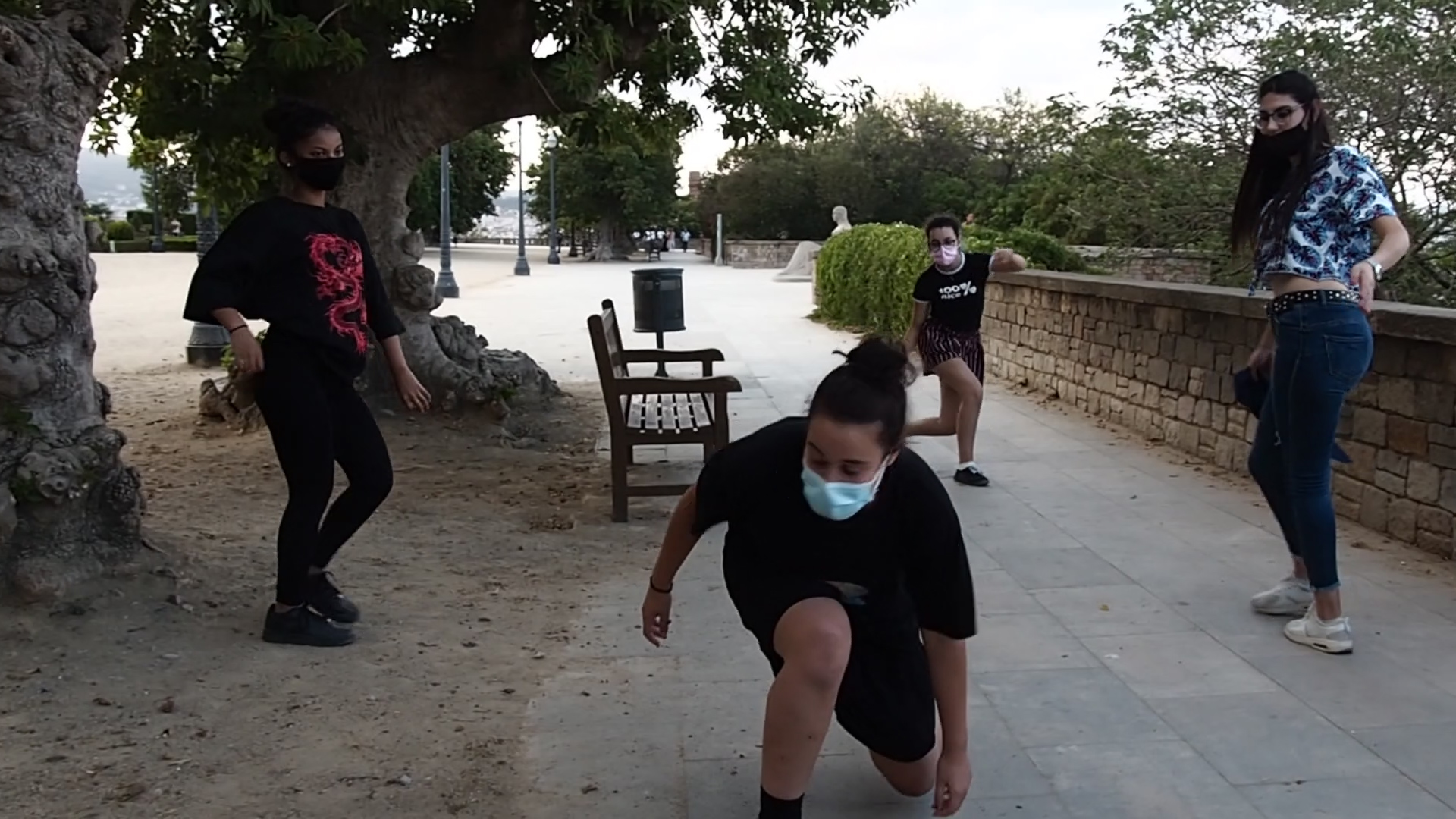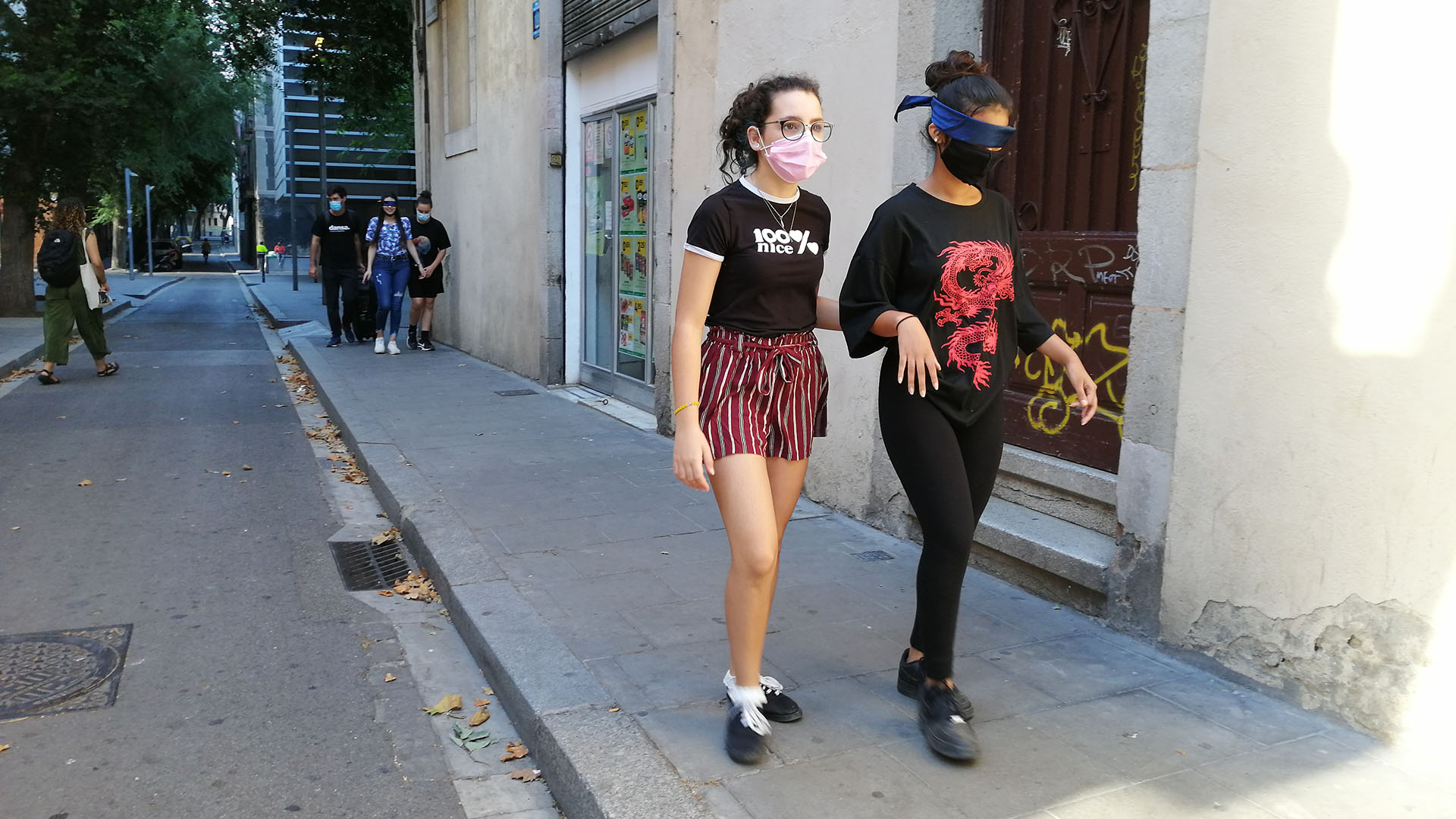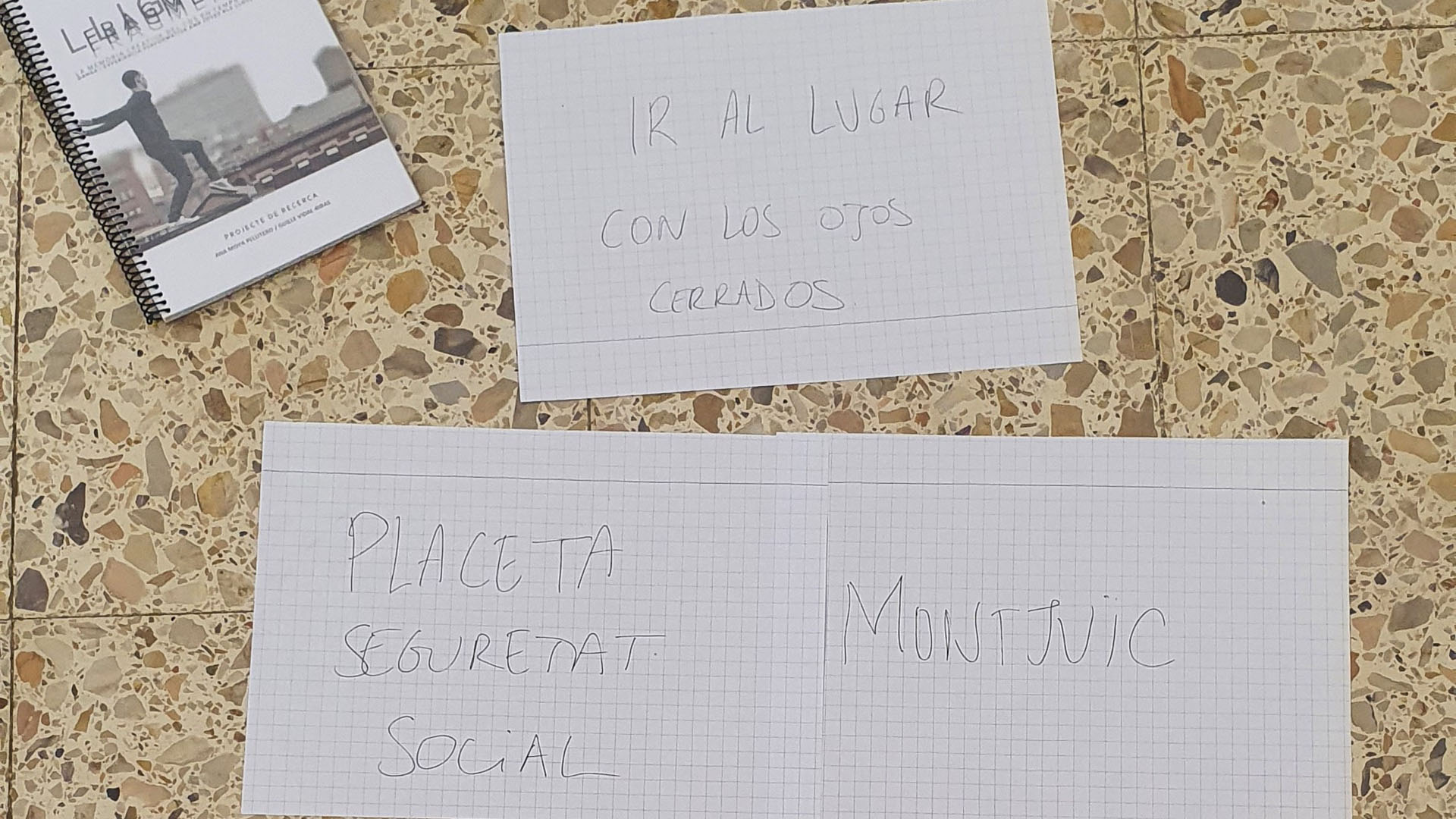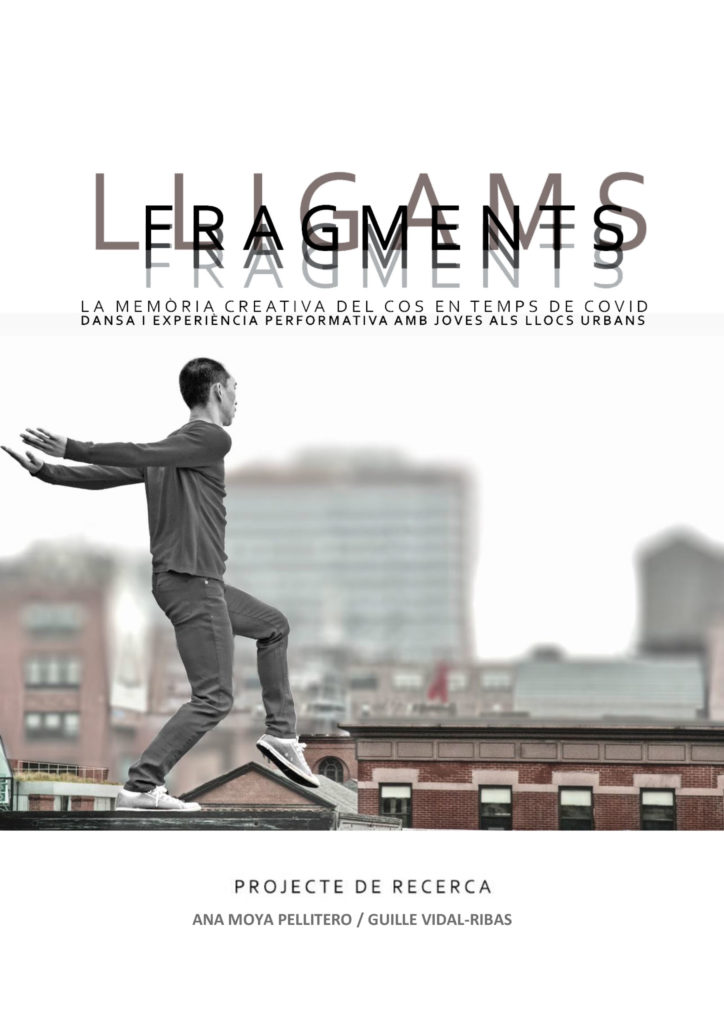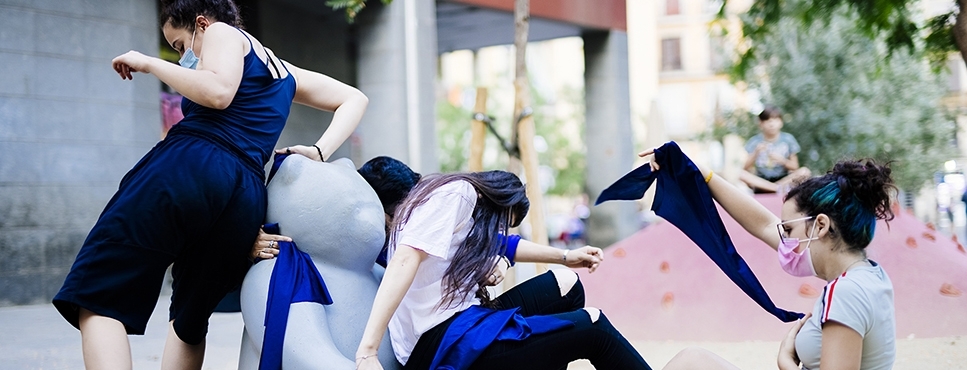
+ Info Site-dance performances_2
+ info site dance performances: Fragments and Bondings
SESSION 0 RECOGNITION
In this Session we present the topics ‘immersion’ and ‘connection’. In this first session, we propose the action of walking in silence as a process of environmental exploration and recognition of Raval’s neighbourhood, wandering in a ‘derive’ experience to all the sites where we will walk in the future, lingering in the details of movements, actions and interactions, as if we had just arrived at an unknown place for the first time. Once back indoors, everyone is asked to recollect an anecdote, a person's action, a space, a sound, an image… in short, any element that has especially stood out during their walk. One by one, they will represent this personal memory, involving a free performative interpretation.
SESSION 1 THE LOOK THAT HEARS
This session combines the topics ‘reflection’ and ‘connection’. One of the key goals is to explore our conscious gaze, where we listen with our eyes and respond with our bodies in a work of introspection. We ask ourselves about those processes of absorption and selection of reality through the gaze. Instead of only transiting public spaces, we want to promote a conscious commitment to inhabit them, that is, to be there in a state of openness and availability and experience them in the present. We select for this session a public space that offers different atmospheres and components in one single space (St. Pau del Camp Gardens).
Session 1, The Look that Hears (Part 1) We did the first part indoors with the aim of learning to reach a state of openness to get closer to the experience of the body and the relationships with others and the physical spaces we share. In this first session we explore the conscious use of the gaze. The look towards others and also the spaces we inhabit. A look that interprets the reality around us.
Session 1, The Look that Hears (Part 2) In this session we work in Sant Pau del Camp Gradens listening to the places from the conscious commitment to inhabit them bodily. In the exercise “Present the place”, participants choose a place in the park and present it to the group, answering the following questions using their bodies: If you were part of this place where and how would you place your body? What can you do and how can you move around this place? What would you change to feel better about it? What energy does it have and if it were an animal what would it be? If this place spoke, what would it say?
SESSION 2 PLACE RESSONANCE
This session combines the topics ‘Intercorporeality’, ‘immersion’ and ‘exchange’. In this session, we experiment with a corporeal knowledge that is sensory, immersive, and non-representational. We touch the world, and the world touches us back, and a non-verbal exchange of knowledge occurs. We experiment with the body's resonance in space, which differs regarding the morphology, materiality, flows and rhythms of this space. We work on the rhythms of bodies and places, the atmosphere of the urban places we inhabit and their rhythmic qualities. We look at the relation between rhythms, body movements and emotional interpretations. We work in Rambla de Sta Mónica and Drassanes Dock. In couples we work in a circuit-performance where one member experiments with certain movements in space and the other follows and observes those movements. There is an exchange of roles.
Session 2, Place Ressonance (Part 2). Tribute to the thousand ways to walk along The Ramblas. In this session we explore the qualities of movement in space, body shapes and the internal states that are generated, and the imaginaries that are activated as a result of body movements. Within the Workshop Site Dance Raval, dance for young people organized by Xamfrà, Center de Música i Escena del Raval, Barcelona.
Session 2, Place Ressonance (Part 4). We work on the theme of composing in space and the eye-camera. We work in Blanquerna square, next to Drassanes building. After selecting five places in this space, we ask the boys and girls to create a movement for each of the spaces. This choreography is worked in pairs in a performance-circuit where one of the members dances and the other observes, changing roles later. In this session, PLACE RESSONANCE, we explore the qualities of movement in space, body shapes and internal states that are generated, and the imaginaries that are activated as a result of body movements.
SESSION 3 THE BODY INSCRIBED IN SPACE
This session combines the topics ‘Intercorporeality’, ‘exchange’, ‘recreation’, and ‘interpretation’. We now turn to spontaneous group choreographic compositions and observe how the group self-organises and inscribes in space and the constellations of bodies resulting. Exercises deal with geometric measurements and organic rhythms between bodies and the dynamics of spatial and bodily occupation. We learn to establish a spatial balance between emptiness and fullness, bodies and the space between bodies, or the flow of movement between bodies. We also work movement scales and intensities. We choose the location of Seguretat Social Squares.
In Session 3, The Body Inscribed in Space, we focus on spontaneous choreographic composition in groups. At the same time, we are beginning to focus on a broader exploration of the elements that make up urban spaces, as well as the relationship that we can establish with them: we are talking about levels of height, weights, directions and body landscapes. In the exercise “Register the body in space”, we mobilize parts of the body, forgetting what we know, those habits we are used to, what the body is supposed to be, exploring it as if it were the first time we move it. We break symmetries, we play in various directions. and we work in pairs observing the other’s movements.
In Session 3, The Body Inscribed in Space, we focus on spontaneous choreographic composition in groups. At the same time, we are beginning to focus on a broader exploration of the elements that make up urban spaces, as well as the relationship we can establish with them: we are talking about levels of height, weights, directions and body landscapes. In the exercise “Body Landscapes in Space”, Part 1, We define a play area, in relation to which participants can be located inside or outside. The decision to enter and place oneself in a certain location, and with one or the other position, must be guided by the judgment of what would be the best way according to the constellation or landscape being generated at the time.
In Session 3, The Body Inscribed in Space, we focus on spontaneous choreographic composition in groups. At the same time, we are beginning to focus on a broader exploration of the elements that make up urban spaces, as well as the relationship we can establish with them: we are talking about levels of height, weights, directions and body landscapes. In the exercise “Body landscapes in space”, Part 2, we work in the Social Security Squares, where we give emphasis to more personal interpretations of each action within the landscape of bodies in the form of brief improvisations of movement, observing how our relationship between bodies is transformed throughout improvisation.
In Session 3, The Body Inscribed in Space, we focus on spontaneous choreographic composition in groups. At the same time, we are beginning to focus on a broader exploration of the elements that make up urban spaces, as well as the relationship that we can establish with them: we are talking about levels of height, weights, directions and body landscapes. In the exercise “The scales of movement”, we work with everyday gestures and with the improvisation of repetitive movements that are worked on scale and intensity in space. Our location is the Social Security Squares.
SESSION 4 THE PLACE IN MY BODY
This session combines the topics ‘incorporation’, ‘exchange’, and ‘connection’. In this session, we continue to develop the notion of group choreographic composition. We activate the body memory and the emotional bonds with space, the imagination and assimilation of places within the body. We move to an open urban space, characterized by the presence of obvious lines and geometric shapes given by the architecture, street furniture arrangements, grids and patterns (Seguretat Social squares). Participants are asked to incarnate the place, its geometry and elements and move according to them. In this session we use exercises of abstraction and mimesis. We also explore the evocation and incorporation of places in our bodies using dislocation exercises (bringing a space that we have experienced elsewhere in a present spatial context). We also activate body memory concerning geometry and spatial morphology.
In session 4, The Place in my Body, we work on the exercise “From stroke to body”. We create drawings through movement, looking at and “transcribing” strokes through body figures and movements, and finally holding and moving these figures into space, in a process of transformation inspired by other drawings or the movements of the other bodies. This session culminates the process of working on the gaze, shifting it towards the visual arts, the embodiment of geometries and the activation of memories in relation to the shapes of space and places.
Session 4, The Place in my Body, with the exercise “The geometries and shapes of space”. In this session we culminate the process of working on the gaze by moving it towards the visual arts, the embodiment of geometries and the activation of memory, in relation to the shapes of space and places. In this exercise we move to the Social Security Squares and we play to embody and let ourselves move freely through the geometries of the space. In this three-members choreography, the group has decided to imitate certain incarnated figures, deciding the order of the selected movements and locations in space.
SESSION 5 IDENTITY AND SOUNDSCAPE
This session combines the topics ‘desire’, ‘reflection’, ‘recreation’, and ‘exchange’. In this session, we work with the intangible nature of space, which deals with our hearing sense and the environmental sounds around us. We go for a walk around various public spaces that can offer a range of different soundscapes (Tres Xemeneies gardens, Portal de la Pau Space, and Sta Monica Ramblas). In couples, we explore the neighbourhood's sounds trusting that our partner is taking care of us while our eyes are bandaged. We work on the impact of these sounds on our bodies and the relationship between body memory and sounds. We explore those creative processes based on body sound resonance, especially the action-reaction dialogue between certain sounds, memories and body movements. We also let the sounds we perceive move us. In this case, the body reacts to specific sound stimuli with a movement, as if bodies were an echo of what has just sounded.
In Session 5, Identity and Soundscape, we now work with the sense of hearing: the soundspaces, the impact of sound on bodies, and those creative processes that emerge from the dialogue between sound and movement. We now open the door to explore the intangible features of space. In the exercise “Body Resonances”, we walk around the room and when we listen a music or some non-musical sound (e.g. a fireplace, boiling water, a vacuum cleaner…) we stop and explore it, because sound is expressed in waves of vibration in the air that have the ability to move us.
In Session 5, Identity and Soundscape, we now work with the sense of hearing: the soundspaces, the impact of sound on bodies, and those creative processes that emerge from the dialogue between sound and movement. We now open the door to explore the intangible features of space. In the exercise “The world that sounds / Echoes”, we work in pairs taking a walk around the neighborhood. We explore the soundcapes without having the sense of sight, while our partner takes care of us. There is an exchange of vulnerabilities and fragilities. The walk culminates in a space where we play to move with the sounds of the environment as if it were an echo of what we are hearing.
SESSION 6 RHYTHM AND WORDS
In this session, we combine the topics ‘interpretation’ and ‘projection’. Time moves us in space and we listen the silence. We start with a quiet public space that offers few stimuli (St Pau del Camp Monastery). In this session we introduce the rhythm of place and body. We also explore how the body resonates with voice and word. We let ourselves be moved by the silence and the passage of time, and we make room for the body to hear the silence of the place. We also share the word within an intimate space generated by incorporating the silence and beat of our heart. This session took place in St. Pau del Camp Monastery.
In Session 6, Rhythm and Words, we continue with sound and movement exercises and we work on the impact and resonance of sounds on the body. In this session, at the Monastery of Sant Pau del Camp, we introduce the rhythm the place and the body, and explore how the body resonates with the voice and the word. “Time moves us”, is a preparatory exercise within the Cloister, where we let ourselves be moved by the silence and the passage of time, and give space for the body to hear the silence of the place.
In Session 6, Rhythm and Words, we continue with sound and movement exercises, working on the impact and resonance of sounds on the body. In this session at the Monastery of Sant Pau del Camp, we introduce the rhythm of the place and the body. We also explore how the body resonates with the voice and the word. “Heartbeat” is an exercise where we share the word within an intimate space generated by incorporating silence and our heartbeat. Prepared texts, songs, poems or thoughts that arise in the moment are expressed aloud as we walk through space letting ourselves be moved by the words, meanings, sounds of our own voice. A voice that emerges spontaneously when we feel ready to do so.
SESSION 7 CONTACT
In this session, we combine the topics ‘connection’, ‘interpretation’, and ‘projection’. In this session, we promote creativity in the experimentation of new relationships with others and with urban places. We explore the physical, relational and symbolic power of contact, rediscovering space from a tactile perspective, promoting the ability to choreograph in couples and groups. We move to a busy public space dominated by layers of activities (Salvador Seguí Square). In this exercise we work our bodies' sensitivity to touch in an action-reaction dialogue with or without real physical contact. This idea of touch and contact between bodies and between bodies and the environment can be real or imagined. We also move to another public space that allow us to experiment with a diversity of surfaces and textures (V. Montalban and S. Seguí squares). We also create movements based on the memory of physical contacts or sensorial experiences of touch. This session allows us to rediscover embodied cause-and-effect relationships, and from the exercises, we generate new body memories.
In session 7, Contact/ (With) Touch, we begin new approaches to our relationships with others and with the places. In this case from the ideas of touch and contact, real or imaginary, creation based on textures, other bodies and also activating memory. The exercise “Space textures” consists on a choreographic creation where textures are chosen, which are embodied, guided and impregnated by the sensations that these contacts generate. Textures generate bodies that move and dialogue with rhythm and feeling.
SESSION 8 RETURN JOURNEY
This session combines the topics ‘desire’, ‘exchange’, ‘recreation’, and ‘incorporation’. In this last session, we bring all the acquired knowledge of the eight previous sessions into practice. In this session we review all the work done in the workshop. We choose those exercises and locations that we would like to re-experience and rediscover after this trip (They chose session 8- contact, the exercise improvisation action-reaction; session 5 -The place in my body, the exercise from form to space; and session 3- Place resonance, the exercise of being moved by one part of the body), and they chose a new place in the neighbourhood to experiment with it. Talk about how the same experience has been from each individual point of view, and make a conclusive closure of what we have learned and how it has transformed us.
Fragments and Bondings Research Report Booklet
Moya A., and Vidal-Ribas, G., “Fragments and Bondings: The Creative Body Memory in times of the Covid-19. Dance and Performance Experience with Youth in Urban Places” (July, 2021), (125 pages), Research Booklet. Funded by the Cultural Initiative Support Office (OSIC), Cultural Department, Generalitat of Catalonia, Spain (CLT019/20/000154).
